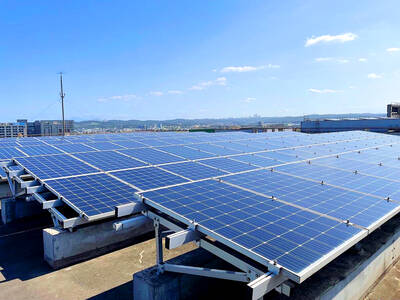How much oil do we have left? According to the United States Geological Survey's (USGS) latest report, published in 2000, the planet had 3 trillion barrels of oil and gas before we started using it up. It calculates we have used some 700 billion, leaving 2.3 trillion barrels underground.
A simple calculation using data from the Center for Global Energy Studies (CGES) shows that with 28.8 billion barrels currently being used a year (79 million a day), there is some 80 years of supply left in the ground.
However, the 2.3 billion barrels left includes 1.4 billion which, according to USGS analysis of global geology, exist but have yet to be discovered. That leaves roughly 890 billion barrels of oil and gas that have been discovered and are booked as proven reserves -- roughly 31 years' supply.
This estimate is lower than the industry's. BP's oil statistics -- the industry bible -- indicate some 1,047 billion barrels of proved reserves -- 36 years supply on current usage.
But analysts don't worry about this too much. Derek Butter of consultancy Wood Mackenzie says: "It is not something we get hung up about. We think in the medium term there is enough oil in reserve."
The BP statistics show that over the past decade, reserves have been roughly constant -- in 1992 there were 1,006 billion barrels -- indicating that through the 1990s the industry has been effective at finding reserves to replace the resources we use. It has done well -- in 1982, the figure was only 676 billion.
Manouchehr Takin of the CGES says: "Forty years ago, economists and geologists said there were 40 years of oil and gas left. Now they are saying the same."
He adds: "The techniques for finding oil and extracting it are advancing rapidly. It shows that at any one time what is left, and the time it will take to use this up is only a snapshot dictated by the current state of knowledge. And, of course, there is the impact of economic development, and the efficiency with which we use energy."
Efficient energy use, he argues, has offset the growth of formerly non-industrialised countries, such as India and China, which have anyway not grown as rapidly as was expected in the Sixties and Seventies. Similar dynamics are likely to continue.
Nevertheless, demand for oil is likely to increase, as, over time, is the price. Former UK Environment Minister Michael Meacher pointed to a crunch by 2015, when he says demand is likely to total some 60 million barrels a day more than the current 79 million, while supplies will only be some 90 million.
CGES argues that Meacher has overstated the increase in demand. It argues that taking reserves into account, his estimates imply 4 percent growth a year, whereas, depending on price, CGES forecasts between 1 percent and 1.3 percent, while OPEC has 1.7 percent.
At the top end of its range, CGES believes demand will be 87.7 million barrels a day, within its expected production level.
Nevertheless, as Wood Mackenzie points out, nothing can be taken for granted. In a note last week it said: "There is no escaping the fact that oil and gas are finite resources: the more that has been found, the less that remains to be found."
The crux is this: Will exploring and finding new reserves be worth it for companies? Theory suggests that as easy resources are depleted extraction becomes more difficult, but that reduction in supply increases price, underpinning the eventual return for companies.
Wood Mackenzie is sceptical. It points out that between them major western countries need to find reserves equivalent to Angola's every 15 months just to stand still.
It shows that new areas such as Alaska face difficulties because of extreme environmental sensitivities and regulatory concerns. Other areas, such as Nigeria, and newer ones, such as Benin, are uncertain.
Companies must take greater risks -- such as exploration in ever deeper water, and expensive investment in extraction from shale beds.
And it points out that reserve replacement has often been achieved by shuffling finds into the proved category rather than actually finding more oil (which underlines the importance of Shell's declassification of reserves).
Eventually, it will be down to consumers to decide when the price of oil and gas makes it no longer worthwhile investing in things that are powered by them. It is likely, concedes Takin, to be well before our notional 2.3 trillion barrels are used up ... whenever that may be.

JITTERS: Nexperia has a 20 percent market share for chips powering simpler features such as window controls, and changing supply chains could take years European carmakers are looking into ways to scratch components made with parts from China, spooked by deepening geopolitical spats playing out through chipmaker Nexperia BV and Beijing’s export controls on rare earths. To protect operations from trade ructions, several automakers are pushing major suppliers to find permanent alternatives to Chinese semiconductors, people familiar with the matter said. The industry is considering broader changes to its supply chain to adapt to shifting geopolitics, Europe’s main suppliers lobby CLEPA head Matthias Zink said. “We had some indications already — questions like: ‘How can you supply me without this dependency on China?’” Zink, who also

At least US$50 million for the freedom of an Emirati sheikh: That is the king’s ransom paid two weeks ago to militants linked to al-Qaeda who are pushing to topple the Malian government and impose Islamic law. Alongside a crippling fuel blockade, the Group for the Support of Islam and Muslims (JNIM) has made kidnapping wealthy foreigners for a ransom a pillar of its strategy of “economic jihad.” Its goal: Oust the junta, which has struggled to contain Mali’s decade-long insurgency since taking power following back-to-back coups in 2020 and 2021, by scaring away investors and paralyzing the west African country’s economy.

BUST FEARS: While a KMT legislator asked if an AI bubble could affect Taiwan, the DGBAS minister said the sector appears on track to continue growing The local property market has cooled down moderately following a series of credit control measures designed to contain speculation, the central bank said yesterday, while remaining tight-lipped about potential rule relaxations. Lawmakers in a meeting of the legislature’s Finance Committee voiced concerns to central bank officials that the credit control measures have adversely affected the government’s tax income and small and medium-sized property developers, with limited positive effects. Housing prices have been climbing since 2016, even when the central bank imposed its first set of control measures in 2020, Chinese Nationalist Party (KMT) Legislator Lo Ting-wei (羅廷瑋) said. “Since the second half of

RE100 INITIATIVE: Exporters need sufficient supplies of renewable energy to meet their global commitments and remain competitive, the economics ministry said Local export-oriented manufacturers, including Taiwan Semiconductor Manufacturing Co (台積電), require sufficient supplies of green energy to maintain their competitiveness and regulations already ensure that renewable energy development adheres to environmental protection principles, the Ministry of Economic Affairs said yesterday, as the legislature imposed further restrictions on solar panel installations. The opposition-led Legislative Yuan yesterday passed third readings to proposed amendments to three acts — the Environmental Impact Assessment Act (環境影響評估法), the Act for the Development of Tourism (發展觀光條例) and the Geology Act (地質法) — which would largely prohibit the construction of solar panels in some areas. The amendments stipulate that ground-mounted solar